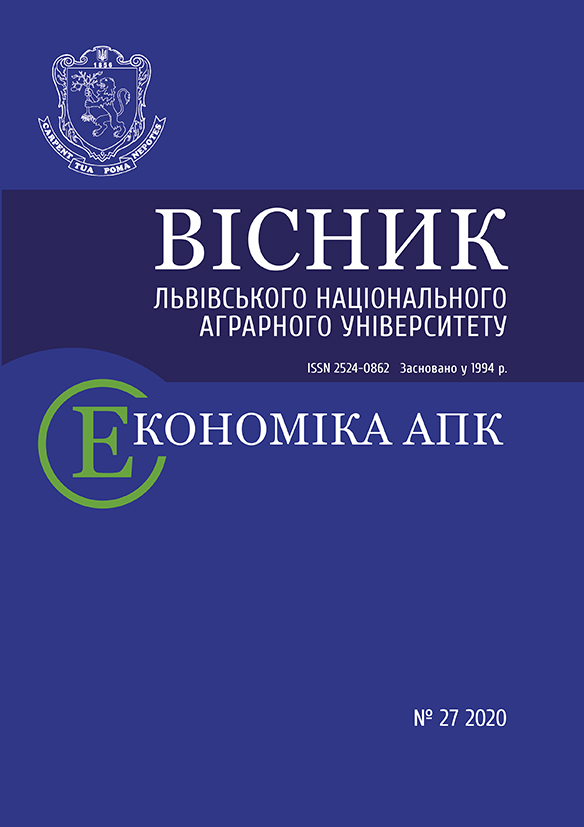Visnyk LNAU: Architecture and Farm Building 2021 №22: 11-16
МETHOD OF SOLVING TWO-COMPONENT SLAB STRUCTURES
M. Deliavskyi, prof. Dr. Hub. in Engineering
ORCID ID: 0000-0001-6952-0870
Bydgoszcz University of Science and Technology
K. Rosinskyi, Master degree student
ORCID ID: 0000-0003-3325-1108
Evaluation Team Leader, Alstal, Grupa Budowlana, Limited Liability Company, Limited
Liability Company Jacewo 76, 88-100
Inowrocław
Yu. Famuliak, Doctor of Technical Sciences
ORCID ID: 0000-0003-3044-5513
Lviv National Agrarian University
https://doi.org/10.31734/architecture2021.22.011
Annotation
One has developed a method for calculating thin composite orthotropic decks based on Winkler elastic foundation. Concerning the proposed method, each part of the deck (macroelement) is considered separately. Expressions on the deflection of the microelement, tangential displacements, moments, transverse forces and generalized transverse forces are obtained. Each expression is called a state function. The collection of state functions describes the stress-deformed state of the deck. Each state function is represented as the sum of the force function and the coordinate function multiplied by unknown coefficients, which are the degrees of freedom of deck deflection. Their total number is always equal to the number of boundary conditions recorded at individual points on the contour of the deck. At each point, two boundary conditions are defined. The force functions also contain unknown parameters of another kind by which the equilibrium conditions on the deck surface are satisfied. Coordinate functions are expressed using basic functions of different orders: deflection – a function of zero order, displacement – the first one, moments – the second one, and transverse forces and generalized transverse forces – a function of the third order.
All state functions are defined in matrix form in order to effectively model the boundary conditions.
As an example, the solution of a two-component deck composed of two rectangular orthotropic decks perfectly connected to each other is obtained. A separate (local) coordinate system is introduced for each deck. Part of the contour of the deck is loosely supported, the other is not fixed. A separate load is applied to each deck. Independent coordinate matrices and force load vectors are constructed for each deck.
One records the conditions of ideal mechanical contact on the common edge of the two decks, and as a result one obtains a composite matrix of boundary conditions and a composite load vector. Zero matrices and zero load vectors are additionally introduced so as to obtain composite matrices and vectors on the outer edges of the deck. Graphs of changes in deflection, displacements and moments in the main sections of the structure are presented, which illustrate the effectiveness of the proposed method.
Key words
orthotropic deck, calculation model, Winkler elastic foundation, basic functions of different orders, shape functions, load functions
Link
- Deliavskyi M., Zdolbicka N., Zdolbickyi A. The Method of Structural Elements in the Calculation of Slabs of Complex Configuration. Lutsk, 2012. 102 p.
- Delyavskyy M., Rosiński K., Zdolbicka N. and Bilash O. Macroelement Analysis of Thin Orthotropic Polygonal Plate resting on the Elastic Winkler’s Foundation. AIP Conference Proceedings 2077, 020014. Teoria płyt prostokątnie różnokierunkowych. Lwów: Arch. Tow. Nauk. 2019. https://doi.org/10.1063/1.5091875 (Published Online: 21 February).
- Filonenko-Borodych M. Some Approximate Theories of Elastic Foundation. Scientific Notes of Moscow State University. Moscow. 1949. Vol. 46. P. 3–18.
- Gryczmański M., Jurczyk P. Modele podłoża gruntowego i ich ocena. Inżynieria i Budownictwo. 1995. No 2. Р. 98–104.
- Halanov B. On Solving Contact Problems for Decks on an Elastic Half-Space. Applied Mechanics. 1987. Vol. 23. No 8. P. 24–30.
- Marchuk A., Piskunov V. On the Calculation of Inhomogeneous Decks on an Elastic Half-Space. Applied Mechanics. 2002. Vol. 30. No 1. P. 88–94.
- Pasternak P. Fundamentals of a New Method for Calculating Foundations on an Elastic Foundation using Two Modulus of Subgrade Reaction. Moscow-Leningrad: State Publishing House on Construction and Architecture, 1954.
- The Finite Element Method for Solid and Structural Mechanics, 7th ed.; Zienkiewicz O., Taylor R., Fox D., Eds.; Butterworth-Heinemann: Oxford, UK, 2014.
- Velykanov P. The Method of Boundary Integral Equations for Solving the Problems of Bending of Isotropic Decks on a Complex Two-Parameter Elastic Foundation. Proceedings of Saratov University. Series: Maths. Mechanics. Information Technologies. 2008. Volume 8. Issue 1. P. 36–42.
- Winkler E. Die Lehre von Der Elastizitat und Festigkeit, Dominicus, Prague, 1867.
- Zdolbicka N., Delyavskyy M. Stress-Deformed State of a Thin Orthotropic Deck on a Three-Parameter Elastic Foundation. Bulletin of Donetsk National University. Series A: Natural Sciences. Donetsk. 2009. Vol.1. P. 134–140.



